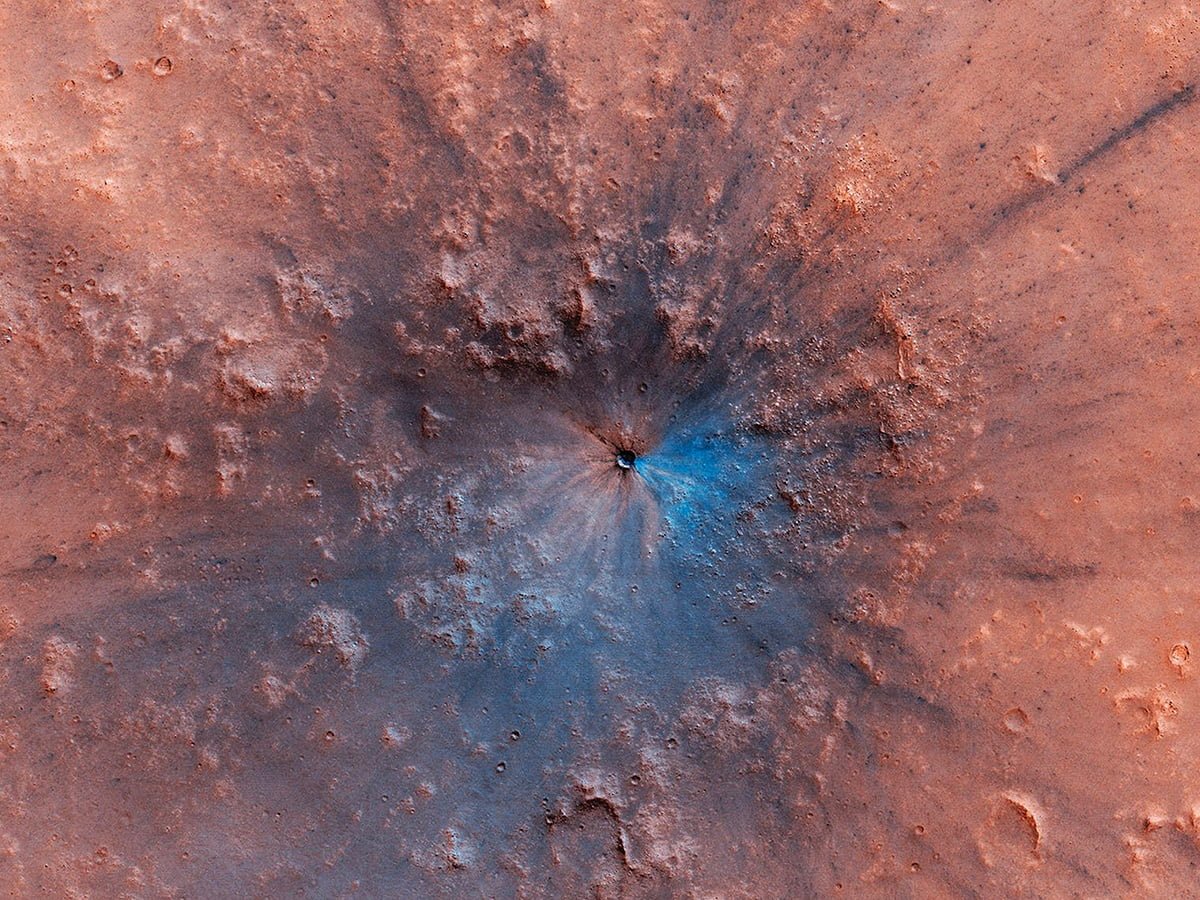It seems that our neighboring planet Mars recently got smacked by an asteroid or some other smaller space rock, causing a fresh crater on its surface. The newly-discovered crater on Mars measures 49 to 53 feet wide, and it is a beautiful sight to behold as caught by the spacecraft orbiting the Red Planet.
The newly-discovered crater on Mars was first spotted in April by the Mars Reconnaissance Orbiter (MRO) and represents a unique sight for the Red Planet. It left a sizable impact crater, as well as different impact waves than what scientists have previously observed. Given that Mars has a mostly red surface, the black-and-blue texture of the impact site flatters its monotony.
Researchers revealed the image online on Jun. 6 with additional color-enhancements using NASA’s High Resolution Imaging Science Experiment (HiRISE) camera which orbits 158 miles above Mars.
Being closer to the Asteroid Belt compared to Earth, Mars is much more often affected by asteroids, comets and other space rocks. That said, on average, Mars gets bombarded by 200 or more space rocks per year according to Space.com, resulting in similar dark marks on the planet. Despite being bombarded so often, this one smudge is more mesmerizing than any other, Veronica Bray, a planetary scientist at University of Arizona told Space.com.
The MRO has been watching over the Red Planet for 13 years, and it still hasn’t seen as big an impact site as left by the space rock in the newly-discovered crater on Mars. It’s interesting to note that, while the space rock fragment that caused the crater measures roughly 5 feet wide, it created a much larger crater which measures from 49 to 53 feet in diameter.
This scenario is unlikely to occur on Earth, however. Earth has a much thicker layer of atmosphere, and as such it would burn up the space rock before it would approach close enough to do any damage. On Mars, more often than not, the space rocks shatter before they land, creating chains of similar craters, similar to how machine gun fire penetrates through material.
What made the newly-discovered crater on Mars an exception is likely that the space rock that caused it was made of a more solid material. It crashed in the Valles Marineris region, relatively close to the equator.
“What makes this stand out is the darker material exposed beneath the reddish dust,” it says in the announcement on the HiRISE website.
The impact wave can be easily spotted in the photo, with the dust remnants of the rock fragments being pushing aside, revealing the rocky Martian surface beneath it.
Researchers still don’t know much about the region in terms of geography. However, Bray told Space.com that its surface likely consists of basalt. She believes that the blue traces in the image suggest that there was a bit of ice hiding beneath the dust as well.





